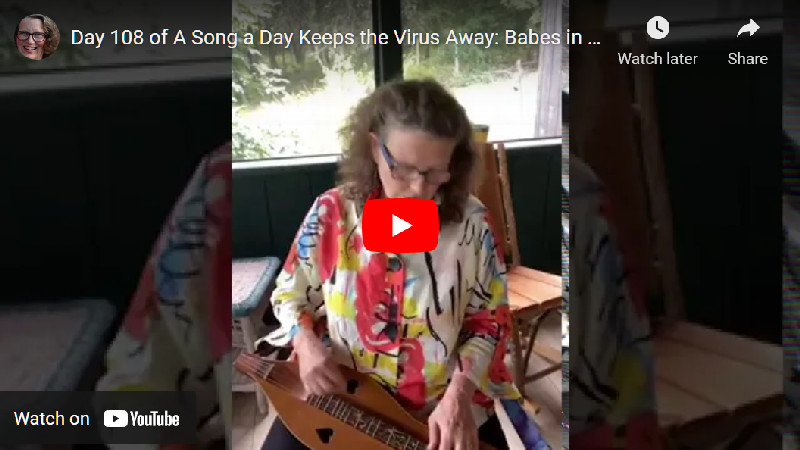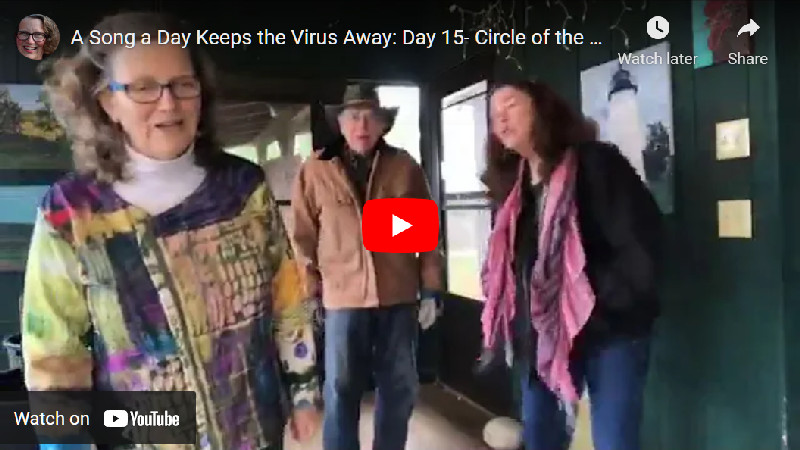We have recently passed the first anniversary of the pandemic shutdown. I marked it as March 13 on my calendar, when I had to cancel an annual retreat with dear friends. At the time, we really thought we’d be back on track in a few weeks, a few months at the outside. But then the days started to accumulate.
I think we all reacted to our sudden quarantine in different ways. Some hoarded toilet tissue. Some wept over grandchildren un-hugged and friends un-seen. Within a very short time, most of us discovered the many ways to meet online through Zoom, Facebook, FaceTime, Google Meet and more. Never the same but the best we could do in a bad situation.
I have to admit that, now that I’m vaccinated and feeling like a bird let out of a cage, my time in isolation was a time of reflection—an opportunity rather than an affliction. I am an entitled white person who lives in a beautiful spot in the woods, with plenty of room to go for walks. My husband was still able to bring home a paycheck, so we weren’t starving, and I have so many avocations that I was never left with empty hours with nothing to do. Music played a large role in my time at home. I believe I actually have sung for more people during the pandemic than I would have had I been on the road this year.
Shortly after we started quarantine, several brave music organizations decided to see if online concerts would be acceptable or even possible. I was fortunate to be involved with the virtual Old Songs Festival, which went off without a hitch. It was held mostly through Ron Olesko’s streamed radio site, Folk Music Notebook. It was completely worth doing and showed me that music presented in this way could be beloved by listeners who were hungry for community, even virtually. CMN also chose to do an absolutely amazing online conference that lasted a week. It was so successful at drawing in new people that aspects of the presentation will be used in future conferences.
When thinking to myself: What can I do to keep myself sane and to also give back? I decided to start singing for fans on my Facebook page, beginning on March 30, 2020. I called my program “A Song a Day Keeps the Virus Away” (SADKVA), thinking I’d be singing a song each Monday through Friday at 4:00 p.m. for a couple of weeks, and then life would be back to normal. Day 250 was yesterday, April 5, when I decided to take a break.
My purpose personally was to expose folks to songs they might not have heard before and could learn to sing on their own. I wanted it to be about the song and not the singer. I did sing my own songs, other songs in my repertoire, but then I mined the incredible resources created by Peter Blood and Annie Patterson, Rise Up Singing and Rise Again, as well as my own enormous library of songbooks. It became an opportunity for me to learn new songs myself.
The SADKVA recordings were all saved to my YouTube channel and to my website, so are all accessible. I also put a tip jar on my website as a way to make up a portion of the income that I lost due to the pandemic. (As is true for most musicians, overnight I lost every gig I had on the books for at least a full year.)
Week followed week, and I realized that singing these songs became a bit of a lifeline for many fans. They left amazing comments of thanks as well as of memories that came up as a result of the songs. It was heartening to see the power of song to soothe, support, and distract people’s attention from the isolation they were experiencing. We created a small community at 4:00 p.m. every day.
The same listeners came back day after day, some for the live performance and some afterwards. There were listeners from Brazil, New Zealand, England, Scotland, Switzerland, Italy, and I’m not sure where else. None of this would have been thought possible before the pandemic. One friend in Israel, listening to Day 108 of SADKVA, wrote this after hearing the song “Babes in the Mill”:
“What a coincidence! I just learned it two weeks ago and sang it on the Webster Sat. Jam last week. I added it to my collection of ‘mill songs.’”
And others are moved to share stories, some long, some short, like:
“This song was the one I sang to my daughter to put her to sleep. Now I sing it to her daughters.”
 Sally singing “Babes in the Mill”
Sally singing “Babes in the Mill”
While my reasons for singing were somewhat selfish (a way to make up some of my lost income, a chance to sing in public, a relatively easy way to stay in touch with fans), I have to say that the experience has humbled me. I have discovered new friends and found old ones. The songs have made a community that supports its members. One listener has recently come down with an aggressive form of cancer. Through the chat function on Facebook, others found out about it, and though they didn’t know the man, they sent their thoughts and prayers his way, which helped him deal with his fear and isolation at this terrible time.
Another listener found I was connected to Jim Sigler, who produced my first album. Through SADKVA, one of Jim’s good friends found me to tell me that Jim was on a respirator in a hospital in Missouri, suffering from COVID-19. We were able to follow his progress as he very slowly improved and finally was brought out of a lengthy coma and was transferred to a care facility. A group of about a dozen of his friends were able to Zoom to him in his room and sing for him. He was still unable to talk at the time, but clearly his eyes brightened knowing we were there. He continues to improve.
Just yesterday I was a guest singer for Nick Page’s Mystic Chorale rehearsal. He leads nearly two hundred people in choral singing online (albeit muted). Participants also have brief opportunities to share their thoughts in the chat before and after rehearsal. I expected to simply sing and leave. Nick asked if one of the singers could sing “Circle of the Sun” with me, trading off verses. I didn’t recognize her name but said “of course!” When the time came, she shared a story about our chance meeting a couple years ago. I had been reading in the waiting room of Brigham and Young Hospital, when a woman came up to me and started to sing (to the tune of “Circle of the Sun”):
Our husbands have surgery in the Circle of the Sun,
Circle of the Sun on their surgery day.
My jaw dropped, tears came to my eyes, and we sat down to have deep conversation as if we’d known each other for years. Then each of us in turn was called away to be with our husbands. I hadn’t seen her since and nearly forgot the story. But last night, I felt like I’d rediscovered an old friend. All through music. During a pandemic. And both of our husbands are as good as cured!
 Sally sings “Circle of the Sun” with Howie Bursen and Claudia Schmidt.
Sally sings “Circle of the Sun” with Howie Bursen and Claudia Schmidt.
For me, singing songs is like walking or talking. I just do it. Always have. So this year has slowed me down enough to really take in the power that these songs have in people’s lives. I am fortunate to be able to make my living as a singer. But that is not the point of the songs. The songs themselves have a job to do. Our job is to get them out there so they can do their work.
We are human and we all can sing. It is a very, very rare person who cannot sing. Usually if someone claims not to sing, it is because someone lied to them when they were young, telling them to shut their mouth and play the drum! I think one of my biggest jobs is to give people back their lost voices and to encourage those who sing to do it more and with each other. The proof of this need is that, even during a pandemic when we are doomed to be apart from one another, we seem to still be able to find ways to be in community, singing together, even if muted on Zoom.
We have managed (for the most part) to hold our worlds together until we can hug again and sing in harmony in one space. I am grateful for the slowed-down time this isolation has brought to my life. I am not anxious to get back to full speed again. But as things begin to rev up and we get vaccinated, I hope I will remember always how much we need each other and how much we need to sing. Together.